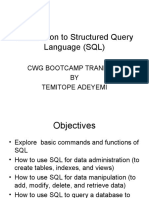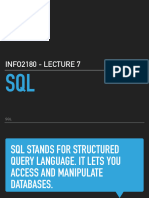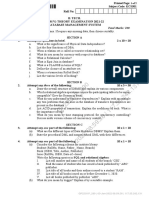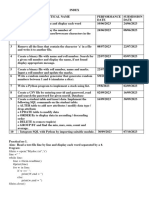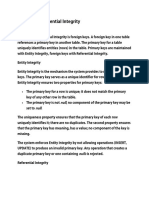0% found this document useful (0 votes)
7 views4 pagesDatabase Notes
The document provides an overview of databases and MySQL, explaining their definitions, types, and functionalities. It covers SQL commands, data types, table creation, CRUD operations, data aggregation, relationships, joins, subqueries, CTEs, and views, along with real-life examples and interview questions for each topic. This serves as a foundational guide for understanding database management and SQL usage.
Uploaded by
Abhijeet KumarCopyright
© © All Rights Reserved
We take content rights seriously. If you suspect this is your content, claim it here.
Available Formats
Download as PDF, TXT or read online on Scribd
0% found this document useful (0 votes)
7 views4 pagesDatabase Notes
The document provides an overview of databases and MySQL, explaining their definitions, types, and functionalities. It covers SQL commands, data types, table creation, CRUD operations, data aggregation, relationships, joins, subqueries, CTEs, and views, along with real-life examples and interview questions for each topic. This serves as a foundational guide for understanding database management and SQL usage.
Uploaded by
Abhijeet KumarCopyright
© © All Rights Reserved
We take content rights seriously. If you suspect this is your content, claim it here.
Available Formats
Download as PDF, TXT or read online on Scribd
/ 4


































